Futures Flat At All Time High, As Silver Tops $50
US equity futures are flat, as the main indexes closed at fresh record highs overnight amid a melt-up that shows no signs of abating, with every small dip being bought and volatility staying low. While plenty of investors have doubts about the AI-driven rally and the tense geopolitical backdrop, the year-end FOMO is the only driver for now. As of 8:30am, S&P futures are flat, while Nasdaq futures trade fractionally in the red, although we are confident the dip-buying algos will promptly pounce on the opportunity. In premarket trading, Delta Air Lines climbed more than 5% after reporting profits that beat estimates. PepsiCo gained on stronger-than-expected revenue and flagged a turnaround at its US beverage unit. Nvidia rose after the US approved several billion dollars worth of its chip exports to the United Arab Emirates. Shares of other Mag 7 names were mixed. Bond yields are higher by 1-2bp across the curve ahead of today's 30Y auction, with USD flat following a 1.2% move WTD. Ahead of Trump / Xi meeting later this month China expanded its rare earths curbs. In commodities, Energy is mixed with distillates higher and crude/natgas lower. Oil slipped and gold stalled near a record high above $4,000 as traders focused on cooling tensions in the Middle East; Silver topped $50 for the first time and PGMs are stronger. Today's session has seven Fed speakers and a 30Y bond auction; yesterday's 10Y auction required a concession. Macro data is delayed again due to the government shutdown.
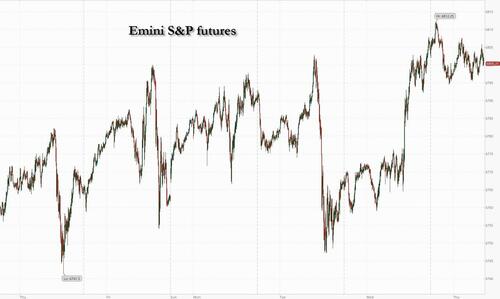
In premarket trading, Mag 7 stocks are mixed (Microsoft little changed, Alphabet -0.2%, Meta little changed, Apple -0.1%, Amazon -0.2%)
- Tesla (TSLA) falls 1.1% as US auto safety regulators opened a probe into the company over incidents in which its vehicles ran through red lights and violated other traffic laws while using the driver-assistance system known as Full Self-Driving.
- Nvidia (NVDA) rises 1.7% after the US approved several billion dollars worth of Nvidia chip exports to the UAE, an initial step in implementing a controversial deal that could serve as a blueprint for American AI statecraft. Separately Cantor Fitzgerald raised its price target to a Street-high, seeing more growth potential for the chipmaker on the back of AI-related growth.
- Rare earth stocks climb after China unveiled new restrictions on exports ahead of a meeting this month between Donald Trump and Xi Jinping.
- Akero Therapeutics (AKRO) jumps 18% after Novo Nordisk agreed to buy the drug developer for $54 per share in cash at closing, with a contingent value right of $6 per share
- Apogee Therapeutics (APGE) is down 6% after the company offered shares.
- AZZ Inc. (AZZ) falls 7% after the provider of metal-finishing services reported second-quarter sales that missed estimates.
- Costco (COST) is up 1% after the warehouse club reported comparable sales growth that beat analyst estimates for September, helped by a rise in both foot traffic and amount spent per customer.
- Delta Air (DAL) climbs 6% after the carrier updated its adjusted earnings per share forecast for the full year, with the new guidance beating the average analyst estimate.
In corporate news, Warner Music Group is said to be close to an agreement with Netflix to create a slate of movies and documentaries based on the label’s artists and songs. Jefferies has come under scrutiny for its relationship with First Brands.
As we said yesterday, and the day before, and the day before that, and so on, stocks around the world have soared to a fresh record as traders looked past worries of a potential bubble in high-profile tech names and instead focused on corporate resilience and the possibility of further US interest-rate cuts. The optimism now faces another test as earnings season gets underway, with Wall Street banks Goldman Sachs and Citigroup due to report next week. Tesla is the first of the Magnificent Seven set to report on Oct. 22, followed by Alphabet, Microsoft and Meta Platforms Inc. on October 29.
“A liquidity glut and the AI boom keep the party going for equities,” said Barclays strategist Emmanuel Cau. Still, the reluctant bulls driving the rally have plenty of lingering worries, such as Nassim Taleb’s warning that investors should insure against a stock-market crash due to structural issues such as the US debt burden.
“Given how lopsided the expectations have become, given how lofty the valuations have become, I think investors are laser focused on earnings,” Aidan Yao, a strategist at Amundi Investment Institute, said on Bloomberg TV. “They are trying to see if earnings are really catching up into the valuations.”
Elsewhere, the Fed minutes revealed that many members have expressed caution — driven by concerns over percolating US inflation. And traders have been slowly backing away from bets on the trajectory of rate cuts. Gold is taking a breather from its record run, while silver just topped $50 for the first time
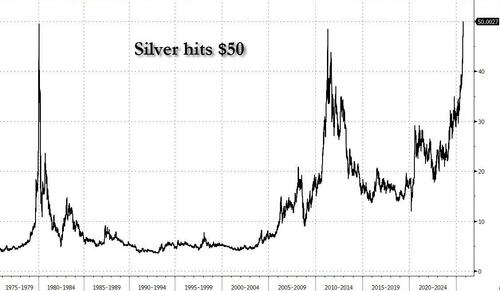
In geopolitical news, Trump said Israel and Hamas have signed off on the first phase of a peace plan. A ceasefire in Gaza has gone into effect, Israel Deputy Foreign Affairs Minister Sharren Haskel said subsequently. If the agreement holds, it would mark a major step toward ending the conflict that erupted after Hamas attacked Israel on Oct. 7, 2023 and threw the Middle East region into crisis. Canadian PM Mark Carney pushed back against Trump’s protectionism in the auto industry, saying that the US-Mexico-Canada Agreement strengthens the US industry. China unveiled broad new curbs on its rare earth exports.
European stocks are mixed. The CAC 40 adds 0.3% while the DAX climbs to a fresh record. The FTSE 100 falls 0.4% as HSBC shares slump after the bank proposed taking its Hong Kong subsidiary private. Here are some of the biggest European movers today:
- HelloFresh shares surge as much as 11% as UBS upgrades to buy from neutral and says the firm offers a “compelling risk-reward”
- Sodexo shares advance as much as 3.5% after the food services company announced that Sophie Bellon will step down as CEO
- Suedzucker shares rise as much as 1.8% after analysts at Warburg said the drop in earnings during the first half is not a major surprise
- Volution shares rise as much as 10%, hitting an all-time high, after the firm delivered annual results that were ahead of expectations
- MTG shares gain as much as 11% after it updated its full-year 2025 guidance and announced a SEK400 million share buyback program
- Mobilezone shares rally as much as 12% after agreeing to sell its German business to Freenet
- Polar Capital shares rise as much as 5.9% as assets under management grow 15% in the three months to the end of September
- Emmi shares gain as much as 4.8% as Oddo BHF starts coverage of the Swiss dairy producer with an outperform recommendation
- Lloyds Banking Group shares drop as much as 3.9% after the lender said it will likely have to set aside an additional provision to compensate customers who were missold car loans
- Michelin shares drop as much as 6.5% following a pre-close call ahead of its 3Q sales update scheduled for Oct. 22
- Gerresheimer shares drop as much as 14% after the company cut its outlook for the year yet again
- Sopra Steria shares fall as much as 5.6% after its CEO Cyril Malargé decided to step down
Earlier in the session, Asian stocks rose, as an AI-fueled tech rally resumed following a brief pause and shares in mainland China gained as the market reopened after the Golden Week holidays. The MSCI Asia Pacific Index rose as much as 0.6%, poised for its first gain in three sessions. A sub-gauge of tech shares was the top performer among sectors, rebounding from Wednesday’s declines. It had risen for seven straight days before that. TSMC was the biggest boost to the MSCI Asia measure after a US index of chip stocks jumped to a fresh all-time high on AI euphoria. China’s CSI 300 Index advanced 1.5% to its highest since January 2022 as investors got up to speed on headlines from OpenAI deals to gold’s climb above $4,000. Benchmarks in Japan and Taiwan climbed to fresh records.
In FX, the Bloomberg Dollar Spot Index is flat, in early London trade it pushed up to its highest level since Aug. 5. EUR/USD was slighly lower at 1.1623; its selloff has slowed as French President Emmanuel Macron is set to name a new prime minister by Friday evening, avoiding the need to call a snap election for the time being. USD/JPY steadies around an eight-month high of 153.22; investors contemplate how much the Japanese currency must weaken before authorities intervene again
In rates, treasury yields are within a basis point of Wednesday’s closing levels following similarly rangebound price action in core European bonds. Focal points of US session include 30-year bond reopening, last of three coupon auctions this week. Fed Chair Powell delivers pre-recorded welcoming remarks at its community bank conference at 8:30am New York time, with text release expected. US 10-year, little changed near 4.12%, trades marginally cheaper vs German and UK counterparts; curve spreads are marginally flatter on the day. $22 billion 30-year bond reopening at 1pm New York time follows Wednesday’s middling 10-year note auction, which tailed by 0.8bp. WI 30-year yield near 4.7% is ~5bp cheaper than last month’s, which stopped on the screws.
The Bloomberg Dollar Spot Index . Spot gold loses a few dollars but remains firmly above $4,000/oz.
In commodities, oil slipped and gold stalled near a record high above $4,000 as traders focused on cooling tensions in the Middle East. Israeli markets staged a broad rally, sending the shekel to a three-year high. The Tel Aviv Stock Exchange 35 Index added 1.7%, notching a fresh all-time high, while bond yields fell across the board. WTI crude futures fall 0.2% to $62.40 a barrel. Bitcoin falls 1%.
Looking at today's calendar, wholesale trade/inventories for August are scheduled for 10 am ET, but govt. data releases are likely to be impacted by the shutdown. Fed’s Bowman, Goolsbee, Barr, Kashkari and Daly are scheduled to speak and Fed Chair Powell gives pre-recorded remarks at Fed community bank conference.
Market Snapshot
- S&P 500 mini little changed
- Nasdaq 100 mini little changed
- Russell 2000 mini -0.3%
- Stoxx Europe 600 -0.2%
- DAX +0.3%
- CAC 40 +0.2%
- 10-year Treasury yield +1 basis point at 4.13%
- VIX +0.1 points at 16.41
- Bloomberg Dollar Index little changed at 1210.88
- euro little changed at $1.1619
- WTI crude +0.3% at $62.72/barrel
Top Overnight News
- Israel and Hamas agreed on terms for the exchange of all hostages held in Gaza for about 2,000 jailed Palestinians. Donald Trump told Fox he expects the hostages to be released “probably” on Monday. A Gaza ceasefire is in effect, Israel’s deputy foreign affairs minister said. A Gaza ceasefire is in effect, Israel’s deputy foreign affairs minister said. BBG
- President Trump said most workers will get back pay and noted they want to make Obamacare better, while he stated that military personnel will probably be paid during the shutdown. Furthermore, it was separately reported that White House officials said President Trump is mulling shifting funds to pay troops: POLITICO.
- Democratic bill to end US government shutdown failed to win enough votes to pass in the Senate, while the Republican bill to end the US government shutdown also failed to win enough votes to pass in the Senate.
- US House Minority Leader Jeffries said he supports an effort to pass a standalone bill to pay military troops.
- US IRS is to furlough 34k employees as part of the government shutdown.
- Bessent wrapped up Fed chair interviews on Tuesday and while Hassett, Warsh, and Waller are still frontrunners, BlackRock’s Rick Rieder performed “very well.” FT
- China tightened its control over rare earths/ sectors crucial to making high-tech products including electric vehicles and jet fighters, threatening to reignite trade tensions with the U.S. ahead of an expected meeting between President Trump and Chinese leader Xi Jinping. WSJ
- China's commerce ministry on Thursday added 14 foreign organizations to its "unreliable entity list", it said in a statement, restricting their ability to carry out commercial activities within the world's second-largest economy. Some of the companies, which are mostly based in the United States, had supplied anti-drone technologies to Taiwan. Politico
- China is using the rally in gold to reduce reliance on US-led financial systems and challenge dollar dominance. Beijing has been accumulating gold reserves for a decade and is now seeking to woo other nations to store gold in China’s bonded warehouses and trade the metal on the Shanghai Gold Exchange. BBG
- Nato allies are discussing a more forceful response to Putin’s increasingly provocative actions, including by deploying armed drones along the border with Russia and easing restrictions on pilots to allow them to open on Russian aircraft. FT
- TSMC reported a better-than-expected 30% increase in its third-quarter sales. BBG
- The US has approved several billion dollars worth of Nvidia Corp. chip exports to the United Arab Emirates, an initial step in implementing a controversial deal that could serve as a blueprint for American AI statecraft. BBG
- NY Fed President John Williams said he supports further rate cuts this year, citing labor market concerns, the NYT reported. He added that he doesn’t think the US is on the verge of a recession. BBG
- Fed's Williams supports further rate cuts; does not think the US economy is on the verge of a recession: NYT.
Trade/Tariffs
- US President Trump's administration is reportedly planning to exclude generics from the big pharma tariff plan, although the decision isn't final and could change, according to WSJ.
- Canadian PM Carney said there will be some bilateral deals alongside the USMCA
- China’s government announced export controls on rare earth materials with MOFCOM stating that foreign firms and individuals must obtain a dual-use items export license regarding rare earth exports, while domestic exporters exporting some dual-use items shall declare the final destination country or region as required, with requirements taking effect from December 1st. Furthermore, it stated that exports of items for design, development, production or use of weapons of mass destruction will not be approved and export applications to overseas military users, as well as to importers and end-users on watch lists, shall not be approved in principle.
- Vietnam said negotiators are to travel to the US in October and November to continue trade talks.
A more detailed look at global markets courtesy of Newsquawk
APAC stocks were predominantly higher following the tech rebound stateside, where the S&P 500 and NDX notched fresh record levels, while participants were encouraged by an agreement on the first phase of a Gaza ceasefire deal, and with Chinese traders returning from the National Day Golden Week holiday. ASX 200 eked mild gains with strength in mining and materials, while tech and the top-weighted financial industry lagged. Nikkei 225 resumed its recent rally with the ascent spearheaded by tech advances following the strength in US counterparts. Hang Seng and Shanghai Comp were somewhat mixed as the Hong Kong benchmark took a backseat to the Mainland Chinese markets, which reopened for the first time this month, while there were also divergences between some banks as Hang Seng Bank was the biggest gainer after jumping more than 26% and with HSBC in the red after proposing to take the former private.
Top Asian News
- Former BoJ Deputy Governor Wakatabe said the BoJ can raise interest rates if inflation expectations heighten and push up underlying inflation, but added the BoJ will likely find it hard to justify raising rates this year due to prospects of weak Q3 GDP. Furthermore, he said the BoJ has not committed to a set timing for raising rates and has not dropped any signals, while he stated the BoJ must coordinate policy with the government, but does not need to keep rates low solely to fund government spending.
- Chinese Commerce Ministry announces export control on some rare earth equipment materials; adds new rare earth elements to list. Announces additional export control on items related to Lithium batteries and Artificial Graphite anode materials. Export control on items related to super hard materials. Export control on some medium and heavy rare earth-related items. List includes rare earth materials and machinery for export control.
- Adviser to Japan's new LPD leader Takaichi, Honda, says the BoJ should be cautious about raising interest rates; unclear when the next rate hike would be, but Takaichi is likely to be cautious. USD/JPY is unlikely to rise above 155 as inflation expectations remain cautious. Weak JPY is positive for the economy when in the recovery phase.
European bourses (STOXX 600 -0.2%) opened mostly on a firmer footing, but sentiment has slipped a touch to display a bit more of a mixed picture in Europe. European sectors are mixed. Telecoms and Basic Resources takes the top spot, with the latter boosted by a few broker upgrades from within the sector alongside strength in underlying metals prices. Banks are found towards the foot of the pile, with losses in HSBC (-6.4%) driving the sector lower after it proposed to privatise Hang Seng Bank. Elsewhere, Lloyds (-2.9%) dips after the Co. warned of a "material" hit related to the FCA's latest motor finance ruling.
Top European News
- German coalition agrees to EUR 3bln in EV incentives through 2029, Chancellor Merz adds that they are aiming for an accord on the combustion ban by Thursday.
- Jean-Louis Borloo has come to the attention of Politico as a potential candidate for French PM Politico writes "Jean-Louis Borloo could fit the composite portrait drawn up overnight by a Macronist strategist: he could “speak to the left,” “embody a depresidentialized government,” and be “not as openly a lieutenant of Emmanuel Macron” as Sébastien Lecornu. Put more trivially by an advisor who got wind of the idea: “He won't go and ask the PR for permission to pee.”"
- BoE's Mann says "the risks to the outlook for the UK economy are two-fold. Inflation remains persistently persistent and the outlook for growth remains modest". "This assessment of risks to consumption is set against a background of persistently high inflation, and drifting household inflation expectations. Neither are target-consistent". "For the first theme, inflation and consumer scarring, the research shows that the rapid increase in the price level has scarred consumers, even as inflation has moderated and real income growth resumed".
FX
- A fourth session of gains for the broader USD and index, this time with a lending hand from GBP weakness (more below), as well as ongoing losses in the NZD following the 50bps jumbo rate cut delivered by the RBNZ yesterday. The macro narrative surrounding the US remains a downbeat one as the government shutdown continues to drag on, delaying economic data releases and threatening a hit to domestic growth, with today's weekly Jobless Claims also shelved for now. DXY prints on either side of 99.00 and eclipsed Wednesday's peak (99.06).
- EUR/USD is subdued but to a lesser extent than some peers, with some degree of certainty arising on the French political front, with news that French President Macron will name a new PM in the next 48 hours and said there is a possible path to a budget by December 31st. Polymarket odds point to a 32% chance of a French election being called by the end of the month, vs a c. 70% probability yesterday morning, according to ING. On the data front, Germany printed a larger trade surplus than expected, although imports and exports contracted. This follows a string of woeful German data, with German Industrial Output and Industrial Orders this week falling well short of consensus. Focus now turns to the ECB Minutes later.
- USD/JPY tilts higher amid Dollar strength and following rangebound APAC trade amid a pause from the recent Takaichi-related advances, with her economic measures and PM nomination said to likely be delayed. USD/JPY has climbed as high as 153.22, with focus now on whether the pair begins to approach 155.
- GBP is among the laggards, despite limited newsflow before comments from BoE's Mann. Initial losses were seemingly driven by technicals as GBP/EUR fell under 1.1500. BoE's Mann stuck to her stance, arguing that "policy needed to remain restrictive for longer, both to squeeze out inflation persistence". Little reaction was seen on the comments.
- Antipodeans are subdued with little notable influence from China's return from the National Day Golden Week holiday, whilst the Kiwi underperformed and is still feeling the hangover from the RBNZ on Wednesday.
Fixed Income
- A contained start to the day for USTs. Newsflow has been light aside from last night’s FOMC Minutes being digested and the ongoing geopolitical situation around Hamas - see the feed for analysis. The above aside, the US docket is once again devoid of data owing to the shutdown, which still continues with no end in sight. As such, the main focal point is the heavy speakers docket headline by Chair Powell; from Powell, we do expect a text release, though this will be pre-recorded welcoming remarks, no Q&A expected. Texts also due from Bowman (voter), Goolsbee (2025), Barr (voter). As it stands, USTs are in a very narrow 112-18 to 112-24+ band and entirely within Wednesday’s 112-17 to 112-27 confines.
- OATs are awaiting the announcement from President Macron on who the next PM will be, an update on this is expected by the end of Friday but there is no specific time for this yet. Politico reports that Jean-Louis Borloo has come to their attention as a potential candidate for French PM, as he can “speak to the left,” “embody a depresidentialized government,” and be “not as openly a lieutenant of Emmanuel Macron”, Politico surmises. Ahead of this, OATs are outperforming peers with gains of c. 20 ticks at most. Upside that appears to be a function of the diminished odds of legislative elections in the near term and signs of some cooperation between parties. Given this, the OAT-Bund 10yr yield spread is holding just beneath 83bps, vs the 88.2bps seen in recent sessions.
- Drifting throughout the European morning. Down to a 128.79 low with downside of c. 12 ticks at most. While marginally underperforming its peers, the benchmark remains clear of Wednesday’s 128.49 base. Pressure potentially a function of the updates on Germany’s automobile situation. As the nation has agreed on EUR 3bln worth of EV incentives, an agreement that comes ahead of a meeting at 14:00BST on the subject. While we don’t yet know how the incentives will be financed, the prospect of additional issuance is potentially weighing on the space.
- Gilts opened lower by 13 ticks before slipping one more to a 90.65 trough, a point that the benchmark has remained around since. UK-specific newsflow light. No move to a text release from BoE’s Mann that stuck to her known hawkish bias. Overall, the complex is under modest pressure but is broadly in-fitting with EGB peers as we await a fresh catalyst.
Commodities
- Crude benchmarks trade rangebound as the European session got underway, as Hamas and Israel agreed to the first part of the Gaza ceasefire. Despite today being the day of the ceasefire, Israel continues to raid the Gaza Strip; sources citing Netanyahu's office said, "the ceasefire will come into effect only after the government approves it", according to Al Jazeera. The Israeli cabinet is to meet at 15:00 BST. Though most recently Bloomberg reported, citing the Israeli Deputy Foreign Minister that the ceasefire is in effect.
- Spot XAU is taking a breather this morning as the yellow metal formed a new ATH at USD 4059/oz in yesterday’s session. The metal fell down to USD 4k/oz during the APAC session as the Gaza ceasefire eased geopolitical tensions and dollar strengthening following the hawkish Fed minutes.
- Base metals extend higher as Chinese markets re-open following a week-long holiday. 3M LME Copper dipped to a low of USD 10.59k/t before reversing c. USD 280/t higher as China announced export controls on rare earth materials. Within the announcement, foreign firms and individuals must obtain a dual use items export licence to export rare earth materials. This is to come into effect on December 1st.
- Britain's energy grid operators are confident of sufficient electricity and gas supply this winter, while peak British day gas demand is seen at 182 MCM this winter vs. peak supply of 565 MCM.
Geopolitics: Middle East
- Kann News, on the Israel-Hamas deal in the Israeli government, states that a clear majority in the government is expected. National Security Minister Ben-Gvir and Finance Minister Smotrich are expected to vote against - but not to resign.
- "Channel 12 quoted sources in Netanyahu's office: The ceasefire will come into effect only after the government approves it", according to Al Jazeera.
- Israeli security cabinet and government meeting on agreement delayed to 17:00 local time (15:00BST), according to Reuters citing sources.
- "Israeli Raid on Gaza Strip", according to Sky News Arabia.
- Gaza ceasefire agreement goes into effect, via Al Qahera.
- Israeli PM Netanyahu's office confirms that PM Netanyahu will convene the government on Thursday to approve the Gaza agreement, while an Israeli government spokesperson said they expect hostages to start being released on Saturday. Furthermore, Yedioth Ahronoth quoted Israeli officials stating that the Gaza agreement will be signed on Thursday and the first release will be either Saturday or Sunday, while it was later reported that the ceasefire will come into effect today at 12:00 noon (10:00BST/05:00EDT).
- Hamas said an agreement was reached to end the Gaza war, secure an Israeli withdrawal and for a hostage-prisoner swap, while it called on US President Trump and guarantor states to ensure Israel implements the Gaza ceasefire deal.
- Qatar Foreign Ministry spokesperson noted that mediators said an agreement was reached on all terms of the first phase of the Gaza ceasefire, while the Gaza ceasefire is to include an end of the war, the release of Israeli hostages and Palestinian prisoners, as well as entry of aid. Furthermore, the spokesperson said the details of the Gaza ceasefire agreement are to be announced later.
- US President Trump previously said he may go to the Middle East by the end of the week, maybe on Sunday, while he separately commented that he will most likely be going to Egypt. It was also reported that the White House said President Trump will get a routine yearly check-up on Friday and is considering going to the Middle East shortly thereafter.
- US Special Envoy Witkoff and White House Kushner is to travel to Israel on Thursday night, via Israeli Media.
- US President Trump announced that Israel and Hamas have both signed off on the first phase of the peace plan which means that all of the hostages will be released very soon, and Israel will withdraw their troops to an agreed upon line as the first steps towards a strong, durable, and everlasting peace. Trump also said he believes Iran will be part of the peace situation and that he spoke with Israeli PM Netanyahu, while he thinks Gaza will be rebuilt and that hostages will probably be released on Monday. In relevant news, Trump told Axios's Ravid in a phone call that he is likely going to Israel in the coming days and would possibly speak in front of the Knesset, which he will definitely do if they want him to.
Geopolitics: Other
- Taiwan Defence Ministry report stated that China is using hybrid warfare to weaken people's trust in the government and support for defence spending, while it added that China is increasing its grey zone attacks and frequency of military activities. Furthermore, it stated that China has been using AI tools to scan weak points in Taiwan’s critical infrastructure and steal and analyse intelligence, as well as noted that China is using botnet cyber-attacks with AI to weaken Taiwan’s digital infrastructure and cybersecurity.
- UN is to slash a quarter of peacekeepers globally due to lack of funding, according to a senior UN official.
- Ukraine President Zelenskiy says Russian forces aim to urgently capture eastern city of Pokrovsk, Ukrainian strikes against Russia may lead to gasoline shortages of up to 20%, US and Russia 'have no shared perspective' on war.
- Kremlin spokesperson Peskov says the dialogue between Russia and the USA have been put on a "serious pause", via CGTN Europe.
US Event Calendar
- 8:30 am: Oct 4 Initial Jobless Claims, est. 228k: DELAYED
- 8:30 am: Sep 27 Continuing Claims, est. 1930k: DELAYED
- 10:00 am: Aug F Wholesale Inventories MoM, est. -0.2%, prior -0.2%: DELAYED
Central Banks (All Times ET):
- 8:35 am: Fed’s Bowman Delivers Welcoming Remarks
- 9:00 am: Fed’s Goolsbee Appears in Podcast
- 12:45 pm: Fed’s Barr Speaks on Economic Outlook
- 1:00 pm: Fed’s Kashkari and Barr Speak in Conversation
- 3:45 pm: Fed’s Bowman Delivers Speech on Community Banking
- 9:40 pm: Fed’s Daly at the Silicon Valley Directors Exchange
DB's Jim Reid concludes the overnight wrap
Markets recovered their poise yesterday, with global equities at new highs as investors remained unfazed by the ongoing political uncertainty in various countries. So the S&P 500 (+0.58%) and the NASDAQ (+1.12%) both hit an all-time high, despite the government shutdown. And over in Europe there was an even stronger performance, even before news that President Macron has avoided a snap election for now by promising to name a new prime minister by the end of the week. Moreover, this rally was clear across multiple asset classes, with global bonds rallying on both sides of the Atlantic, oil prices picking up again, and gold prices (+1.44%) at another record of $4,042/oz.
In terms of those political various stories, last night was the deadline given to France’s outgoing PM Lecornu to seek a way through the impasse. In the end President Macron’s office announced that he would but forward a new Prime Minister by Friday evening. This puts off the risk of snap elections for the time being. Investors were fairly optimistic during the trading session, as the outgoing PM Lecornu continued to insist a path forward was possible and that the deficit target for 2026 should be below 5% of GDP. And in turn, that led to a positive market reaction, with the Franco-German 10yr spread (-2.4bps) falling back to 83.5bps, whilst the CAC 40 (+1.07%) was the best performer among the major European indices. The attention now will shift to whether this new PM can form a cabinet, or whether Macron will eventually have to call for parliamentary elections. Polymarket has the implied probability of another election by year-end down to 51% overnight from nearly 80% earlier yesterday.
Over in the US, the focus remained on the government shutdown, amidst mounting speculation that it might even drag on to next month. That came as Republicans and Democrats showed no sign of publicly shifting their positions, with Democratic Senate Minority Leader Chuck Schumer saying that their position on healthcare subsidies remained the same. Republican Senate majority leader Thune said that the Senate Republicans are prepared to bring individual appropriations bills forward in order to reopen the government department by department in what would be a long process. Speaker Johnson has not been receptive to this idea however, according to reporting from Axios. Nevertheless, US equities continued their historic pattern of shrugging off the effects, and both the S&P 500 (+0.58%) and the NASDAQ (+1.12%) moved up to new records. And once again, that was driven by tech and semiconductor companies. The Philadelphia Semiconductor Index (+3.98%) was up to a new record of its own led by AMD (+11.4%) which continues to rise after the OpenAI headlines from earlier this week.
Rate markets had a busy afternoon in the US with the Fed minutes and a 10yr auction within an hour of each other. The minutes showed that most FOMC members at the September meeting “judged that it likely would be appropriate to ease policy further over the remainder of this year.” This aligns with the dot plot as well as recent fedspeak. There was clearly a level of caution throughout the minutes as “Participants generally assessed that recent readings of these indicators did not show a sharp deterioration in labor market conditions.” However, on inflation, the majority of members emphasised upside risks. 10yr yields were nearly flat on the day before the minutes and then closed -0.7bps lower at 4.117%. 10yr yields had been stronger earlier in the session but were potentially weighed down by a late auction concession ahead of a $39bn 10yr note sale an hour before the Fed minutes. The auction metrics were solid with decent demand even as the primary dealer award ticked up from last month’s record low. Today we’ll get another test of duration demand with a $22bn 30yr auction.
Meanwhile, the spotlight on gold continued after spot prices (+1.43%) closed above $4000 for the first time. A lot of the investor moves towards gold have been led by both official central bank and ETF demand as the US government shutdown continues. In fact, total holdings of gold ETFs have already seen their highest point since September 2022, back when we had surging inflation globally and the Fed were hiking by 75bps per meeting to get it under control again. This flow into gold and other alternatives like Bitcoin (also up +0.73%) is something to keep an eye on, although yesterday we also saw the dollar index (+0.34%) hit a two-month high.
Back in the rest of Europe, equities also posted a strong advance, with the STOXX 600 (+0.79%), the FTSE 100 (+0.69%) and the DAX (+0.87%) all rising to fresh records. We did get a bit of data, including from the UK’s ONS, who announced that it had revised down the government’s borrowing for the current fiscal year by £2bn, leaving the budget deficit at £17.7bn in August. Nevertheless, gilts still underperformed, with the 10yr yield only down -1.0bps, compared to larger falls for 10yr bunds (-3.1bps), OATs (-5.5bps) and BTPs (-6.0bps).
In terms of data yesterday, we did get some small misses on Swedish headline CPI inflation (+0.9% y/y vs 1.0% y/y expected) and CPIF ex-energy (2.7% y/y vs 2.8% y/y expected) relative to consensus for September, but they were firmly in line with the Riksbank’s fresh forecasts, and are unlikely to change the central bank’s mind from holding rates for now. Today in Europe, we’ll also get the ECB’s account of their September decision, and several speakers including ECB President Lagarde and BoE Governor Bailey.
Asian equity markets are largely reflecting the overnight gains observed on Wall Street, primarily driven by increases in technology shares, as ongoing optimism regarding AI has spurred investment in chipmaking and related sectors. Throughout the region, mainland Chinese markets are leading the way, rebounding after a week-long holiday, with the CSI index rising by (+1.61%) and the Shanghai Composite index also experiencing a significant increase of (+1.24%). In Japan, markets have continued their upward trend, with the Nikkei index climbing (+1.40%) and the Topix index increasing by (+0.24%), both approaching record high closing levels due to gains in the technology sector. South Korean markets are closed for a holiday, while the S&P/ASX 200 index in Australia is seeing slight gains (+0.11%) with the Hang Seng moving back to flat after experiencing a decline of as much as -1.0% earlier pressurised by losses in health tech and healthcare stocks following a report from the Wall Street Journal indicating that tech giant Microsoft intends to make significant investments in AI-driven healthcare. US equity futures are flat.
To the day ahead, and data includes Germany’s August trade balance. Central bank speakers include the Fed’s Kashkari and Barr, the ECB’s Villeroy, and the BoE’s Mann, and we’ll also get the ECB’s account of their September decision. Earnings include Delta Air Lines and Pepsi. Lastly, there’s the US 30yr bond auction.
Tyler Durden
Thu, 10/09/2025 - 09:06


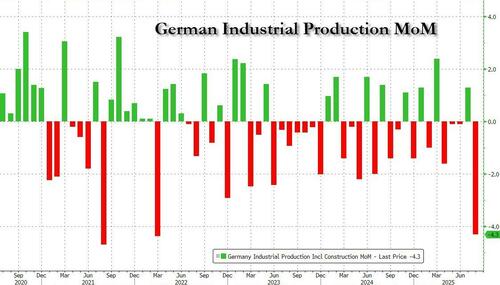
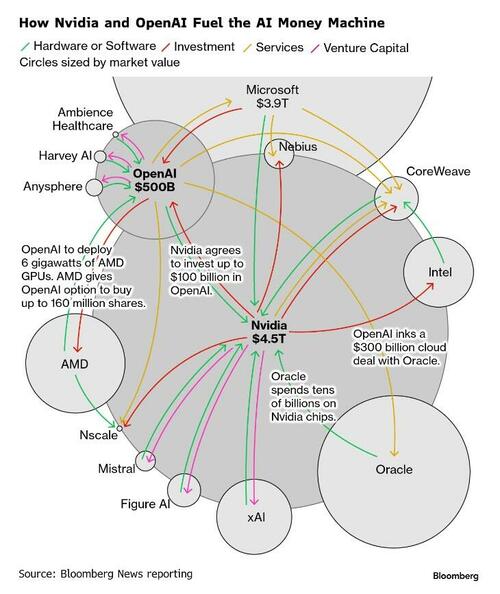

 Via Associated Press
Via Associated Press A data center near single-family homes in Stone Ridge, Va., on July 17, 2024. Nathan Howard/Getty Images
A data center near single-family homes in Stone Ridge, Va., on July 17, 2024. Nathan Howard/Getty Images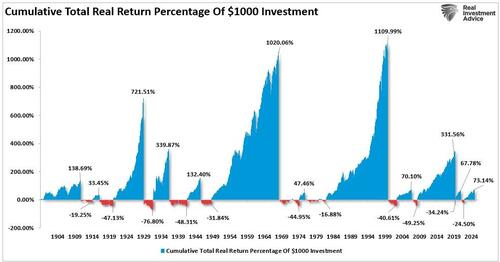
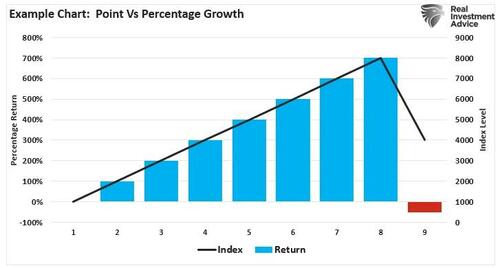
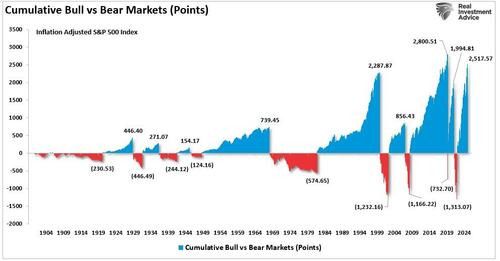

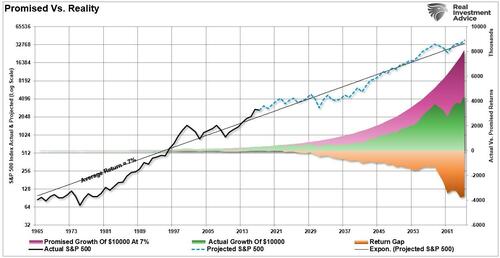
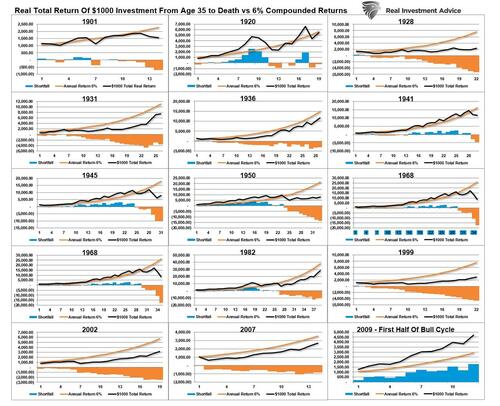




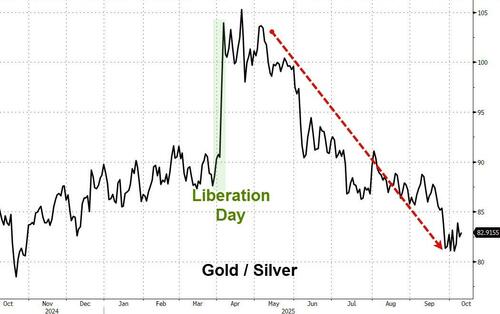
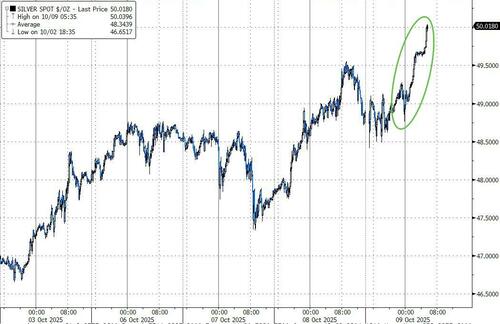
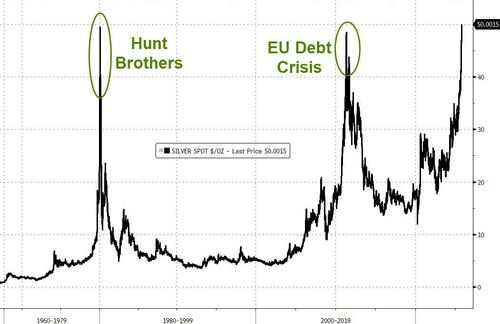
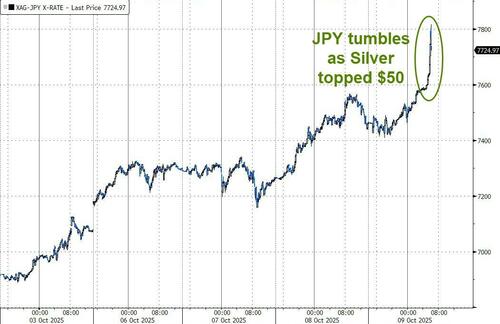
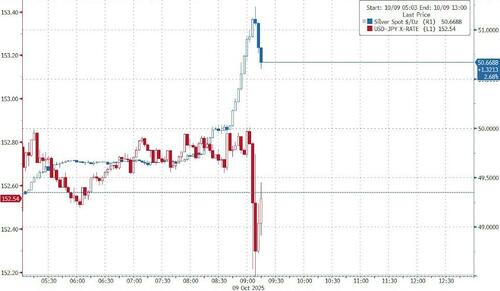
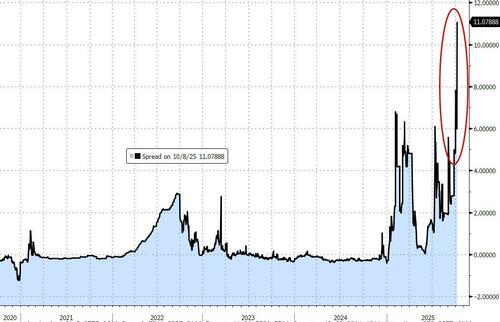
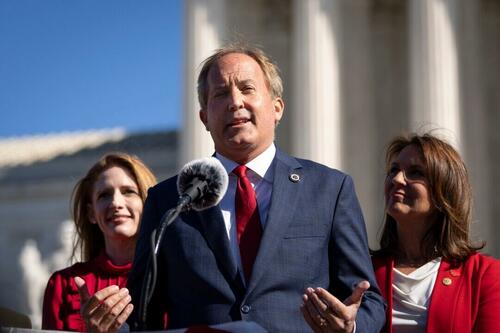



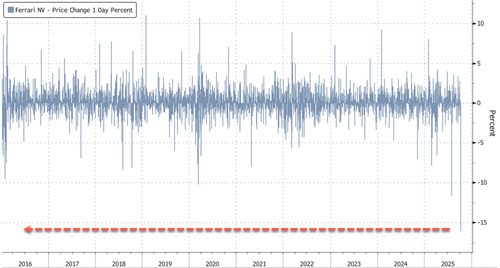
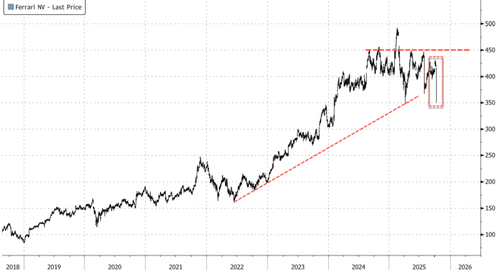
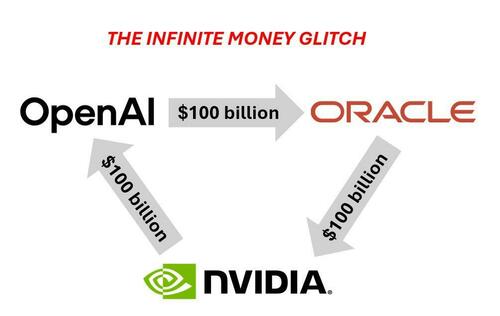
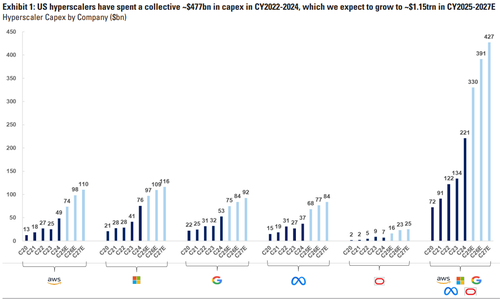
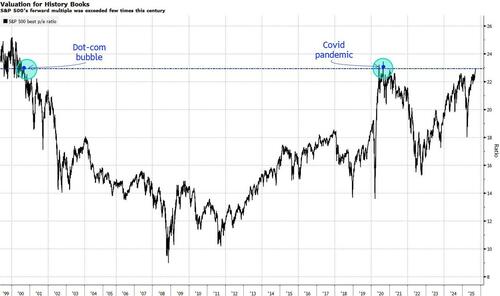

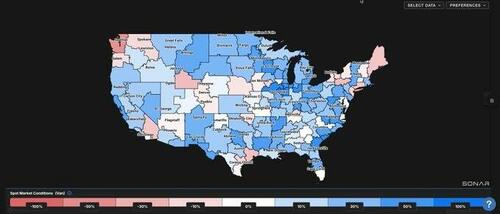
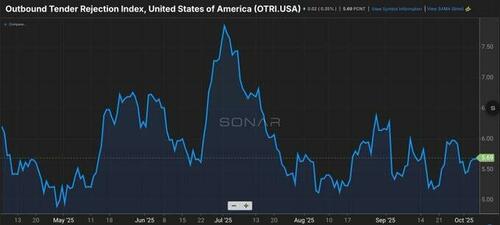
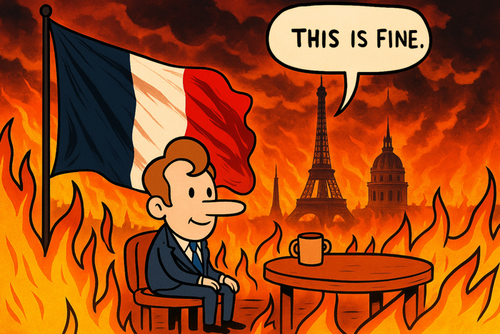
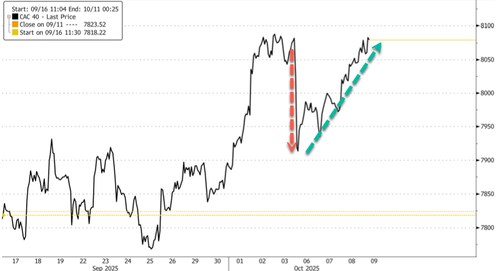
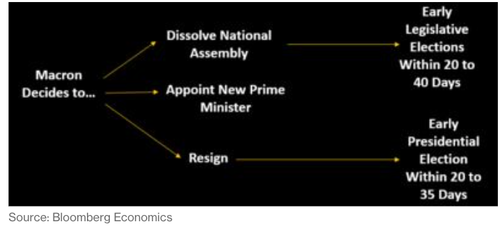
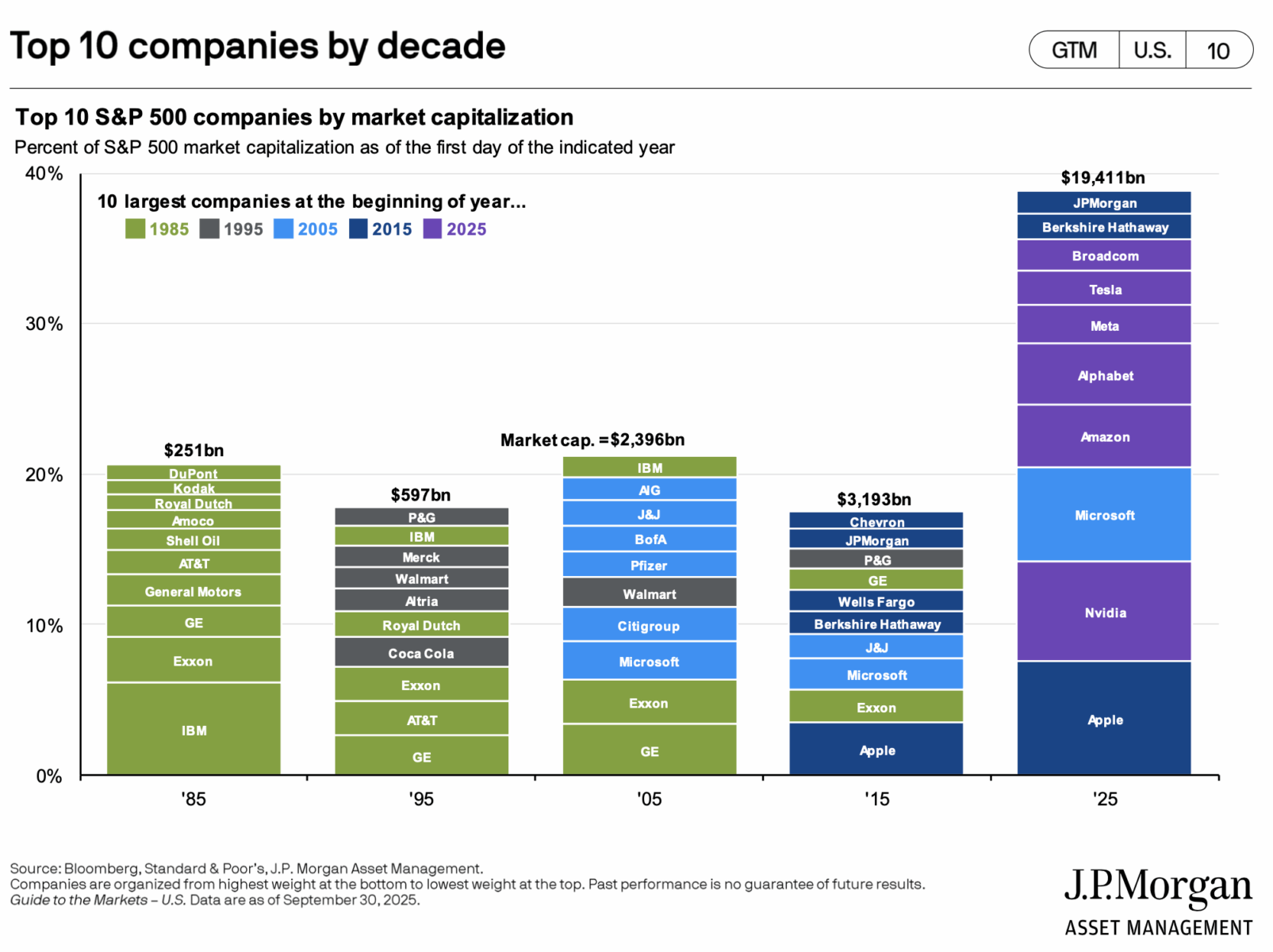

Recent comments